Media | Articles
Barn Find Hunter: A 1-of-3 Sleeping Bear Dunesmobile Gets Another Shot at Life
Tom Cotter and the Barn Find Hunter video crew have made some pretty epic discoveries over the years. Rare Porsches, Shelby Mustangs, a Ferrari or two–you know, the fun stuff. But the team’s most recent finding—a 1966 Ford F100 pickup—might just be their coolest yet.

The Sleeping Bear Dunes National Lakeshore in northern Michigan is world famous for its beauty, its scale, and the massive mountains of sand bluffed up against the turquoise waters of Lake Michigan. (Yes, the author is biased; he lives about 40 minutes from this treasure. No, he will not apologize.)
That rugged landscape was, and still is, a tough hike. So, just before World War II, a businessman named Louis Warnes had the bright idea to use the automobile to take tourists up and around this beautiful landscape.
These “dunesmobiles,” as they were called, came in a few different shapes throughout the years. The earliest versions were used 1930s-era Ford convertibles with balloon-style aircraft tires on them. Once those were worn out, a fleet of new 1948 Ford convertibles took over. Following those, a flock of 1956 Oldsmobile convertibles stepped in.


In the mid-sixties, as those Oldsmobiles petered out, Warnes turned to the Ford F100 pickup for the final generation of the dunesmobile. The making of these trucks is fascinating. As Cotter explains, Warnes turned to a local welding shop to chop the brand-new frames and extend the trucks roughly 24 inches. The roofs were removed to provide a more open-air feel, and then rows of seats were added in the bed to up the number of people one vehicle could haul.
Marketplace
Buy and sell classics with confidence
Eventually, the land was turned into a national park and vehicles were banned from the sand, marking the end of this enterprise. The F100 pickups then went to Manitou Island to become maintenance vehicles for a period of time, before returning to the mainland to be sold off on the cheap.

Tom and the gang have been tracking the whereabouts of these trucks for some time. They’ve traced the history of five of the trucks from the program, and the pickup featured here is, as far as they know, the only one left with the original scripting still written on the side from 1966. Even more rare: It’s the only one they know of that had its roof welded back into place following its service in the dunes. After years of searching, asking around, and cruising Northern Michigan backroads, the team finally found it thanks to a serendipitous social media post from a new property owner in the area.
Though the F100 is a bit rough, there’s a remarkable amount of history preserved in this example. We see that the odometer inside reads 63,000-and-change miles, which Tom bets are all original. The floor wears a Monroe Shocks sign as a patch, and there’s plenty of rust forming on the tailgate. But look at that lettering along the side! Inside the glovebox, Tom finds a Michigan registration for the truck that expired in 1998—and a nice Craftsman screwdriver, among other things.

Tom then launches into an interesting thought exercise about whether or not something like this should be restored. “In every car’s life, there comes a point where it’s no longer worthy of a restoration,” he says. “It would cost you more to restore the car than it’s worth.”
But as he also notes, sometimes the dollars and cents become secondary. “People have stopped by and talked to the owner, they want to buy the doors off this thing. But that would destroy a piece of history from this area. Even though this truck is rough, and if this were just a truck—without this history and without this custom bed—if this were just a truck, it’d be worth $500 and you would not consider restoring it. But because this truck has so much local history, it’s worth more than your average truck to this region of Michigan.”
Game on.

Tom then turns to Davin Reckow, the man with the greasy hands you’ve seen in countless episodes of our Redline Rebuild series, to see if he can get the ol’ girl to turn over. As mother nature rains down in a fury, Davin sets to work on the truck’s inline-six, but not before introducing the truck’s new owner—our CEO, McKeel Hagerty.

As he’ll readily admit, McKeel has a soft spot for these dunesmobiles. “Our family story with these dunesmobiles goes back to when my dad was a kid, when he dreamed of being a dunesmobile driver in the 1948 Fords,” he explains. “My dad knew that they were going to be shutting [the dunesmobile operation] down, and we went out and went for one of the last dune rides in these. I’m going to just imagine it was this one. It’s exciting. This is a puzzle that we’ve been putting together for a long time and it’s part of our family. It’s just kind of cool to think about it.”

With McKeel’s careful assistance, Davin manages to get the engine to turn over with a fresh battery. However, there’s no spark. Into the distributor they go. The eventual diagnosis is that it needs a new coil. In the meantime, Davin invites McKeel to swap in some fresh plugs. With most of the ignition system changed, the team finally gets some spark. Fresh gas goes in from an external can and an electric pump, and voila, the sixer coughs to life. “I can’t believe it!” McKeel exclaims.
Chatting later with Tom, McKeel restates his excitement about the newest vehicle in his stable. “We’ve been looking forever for one of these, this generation of them. Well, the Barn Find Hunter team and our team, you guys worked together for years to try to find one. And who knew that it wasn’t that far away from where I live?”

“You’ll have these passing things sometimes with vehicles in your life, and when you’re a collector and you go back and start finding them again, your memories do sharpen,” he continued.
Looking ahead, McKeel plans to let the Redline Rebuild team work on the car for a bit to see what they can make of it in its current state, but then ultimately the dunesmobile will be treated to a full restoration. He talks about his family’s involvement with a Fourth of July parade that happens over in Glen Arbor, where another one of his dunesmobiles—a 1948 Ford—has been a star fixture for some time. The goal is to bring this F100 along to that parade eventually, as well as to find other ways to share this piece of northern Michigan history with as many folks as possible.

“Everything we do at Hagerty, we share with everybody,” McKeel remarks. “People will get to drive it and ride in it, and I can’t wait to pick people up from the airport in it!”
Be sure to check out the entire episode below and enjoy the loads of historical photos, additional anecdotes, and good old-fashioned wrenching.
***
Check out the Hagerty Media homepage so you don’t miss a single story, or better yet, bookmark it. To get our best stories delivered right to your inbox, subscribe to our newsletters.

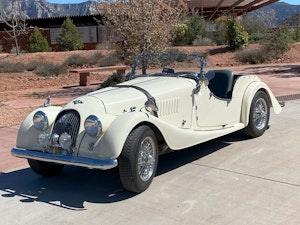
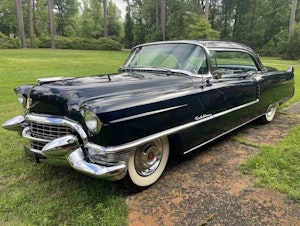

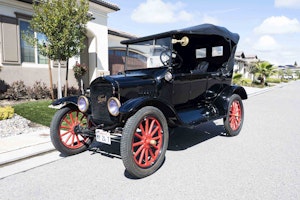
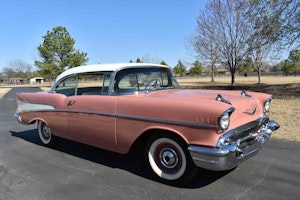

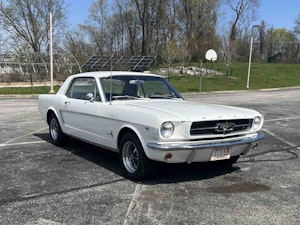
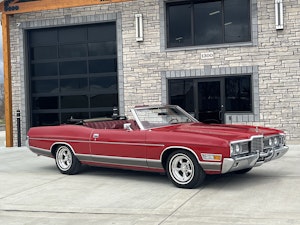













“ultimately treated to full restoration”
I dunno, the value is the history and “restoring” deletes the history. Why not just send it to the crusher?
Thankfully the new owener of the property doesn’t feel the same way you do. Restoration does not delete the history. It is still the same truck.
Gotta disagree with you on this particular vehicle. The history, if not the patina, would remain, and the extensive modifications to this vehicle mean that this would still be distinctive from any other F100 out there. I agree that if you have a historic vehicle with unique history and wear and tear related to that unique history that you should leave it be (if the vehicle would be indistinguishable from its stock brethren after the restoration), rather than eliminating its uniqueness. That is clearly not applicable to this modified vehicle.
Brings back alot of memories from when Mom and Dad took us to the dunes to ride in one of these. Love to see this one completed along with the 1948 together. Thanks a million.
This truck should be preserved, NOT restored! PLEASE keep the patina!! Make it safe and runnable for parades, but fully restored will loose the flavor.
Have to agree with the author about the lake. I was born and raised in Chicago and spent most of my adult life there. Over the years, I’ve been all the way around it and there are many beautiful spots to see. But the Michigan side is by far the most beautiful. It’s probably not the first place that comes to mind for most Americans when it comes to vacations or sight seeing. I hope it stays that way.
I say clear coat the patina, rebuild the running gear, find some more Monroe shock signs for patches and leave it as is.
Second that. Absolutely! Those “Dune Schooners” as Mac Woods called his in Grand Haven, were a treat even for locals. Most memorable aspect of a ride in one: How smoothly it glided through the woods 2-tracks leading to the front dunes by the lake, which I later fogured was a function of the balloon (aircraft?) tires, the loaded up suspension from so many people on it, and the sand itself being so “squishy”. Schooner was an appropriate descriptive name.
Absolutely agree. If you want ‘pretty’, build a clone.
Beautiful area and we visit the dunes about once a year when we go “up North” and use the west coast route going up to Petoskey area. Easy to hide a vehicle like that around there that’s for sure. It looks like it belongs sitting in Glen Haven with the old general store and antique gas pump outside.
This will be cool to see running again. The dunes are beautiful in Michigan. My favorite were the Warren Dunes in southwest Michigan just a little north of the Indiana border
If you want to restore it, go ahead. The only folks interested in ‘patina’ are the ones who have memories from back in the day. Doing the math, the youngest of those will be fifty-ish about now? No doubt you’ll re-remove the roof, and put the passenger seats back. With all that done, do I think it makes any difference if you paint it? The GM Futureliners have mostly been redone. The Yellowstone busses, too. If you want people to understand the experience, make the truck like it was back in it’s glory days.
I agree. In its present state, it’s ugly. Restore this truck to its former glory!
We visited the dunes after the dunesmobile era. The hike to the top to see the lake was a real challenge.
This truck needs a proper restoration. Patina is nothing but bad paint and rust.
I’m not sure where the fine line between “Preservation” and “Restoration” lies, but this truck deserves a heavy dose of both. I’m willing to bet that 90% of the wear and tear occurred well after the significantly historic first life of this truck.
I think that restoration of any of the mechanicals is “Preservation” of the historical value. Repairing parts like the rusted tailgate, replacing the missing parts and seating is preservation. Getting the interior of the cab refreshed/replaced, repairing the welded-on roof, or removing it completely is preservation of the historical significance in my opinion.
I’m on the fence about preserving the patina but my bias would be to return the truck to its condition in 1978 when it was retired from its first life and call it preservation. The only thing I would say about the graphics is that if they can be recovered that would be fine. But I would not repaint them, that’s history.
I’ve jumped off the fence on the paint. I would do a full restoration and make the truck worthy of a parade. The history is in the story of the truck and the Dunes, not the truck itself.
I agree. It didn’t look this crappy when it was being used for the purpose it was built for, and that’s the entire point.
The City of Philadelphia just last week put some totally restored/updated trolleys from 1947 back into service. They are spectacular, the way they looked before wear and tear, abuse, graffiti, etc put the rest of their brethren in the graveyard.
This truck obviously has a rich history, including a long period of neglect and abandonment. Patina belongs on the Statue of Liberty but a 1966 Ford should wear a shiny new coat for those parades.
This truck is “ultra-rare” because of what the original owner chose to do with it, and its lost small fleet of companion dunemobiles – but not because of anything more tangible or statistical, like how few 1966 F-150s were manufactured or how few still survive – things that might occasionally matter even more to a collector from someplace other than Michigan. Specific case history aside, given the millions of vehicles ever built and what happened to them all over the years, there must be many other such “ultra-rare” situations, sorta depends on the perspective of individual observer/owner/collector. —- Amongst various other things in stir, i have my family’s clean well-traveled but relatvely low-mileage 1967 F250 Camper Special, somebodyelse’s old basketcase 1967 Honda Scrambler CL-77 305 (much like the one i had in high school but a year newer, and an antique now – ouch!), and a 20th anniversay model 1984 Mustang GT350 from my father, plus a restored 1977 Mustang II V-6 (given to my daughter so she can know how i got to today, and still not go too fast) – they’re all special to me, but are any of them rare, too? >>>> Consider Elon Musk’s roadster – ? was it ultra-rare because it was his, or one of a few early Telsas built (proving the practicality of electric cars), or possibly a prototype, or maybe just because it was one of only a few vehicles and the only car (electric or otherwise, complete with Starman onboard) ever launched into space ? – with most of the other outerspace vehicles being various rovers, buggies, and drones (including a very expensive moon-golf cart) that are still on the Moon, and also on Mars (including an unbelieveable helicopter there – now that’s “ultra-rare”). 🙂 cheers / sn
We had a lot of realitves that lived in Michigan. We would visit them once a year. One year we went to the Dunes. We took rides with our parents in the 1956 Olds. It was quite an adventure.
Hwy guys, you have virtually the same picture of that thing displayed 4 times. What ‘s the point?
Patina, paschmina. Those trucks didn’t have the rusty hulk look when they were in service. Why the heck would you want to preserve what sitting rotting in a field did to it in the 30 years it’s been out of comission? …unless rat rod is what you’re going for. Restore it to service condition to help people relive the memories of what they experienced. Cut the roof back off. Anything else is just goofy, misplaced sentimentality. Like there’s something magical about the rotting seat cushion padding that you sat on as a kid.